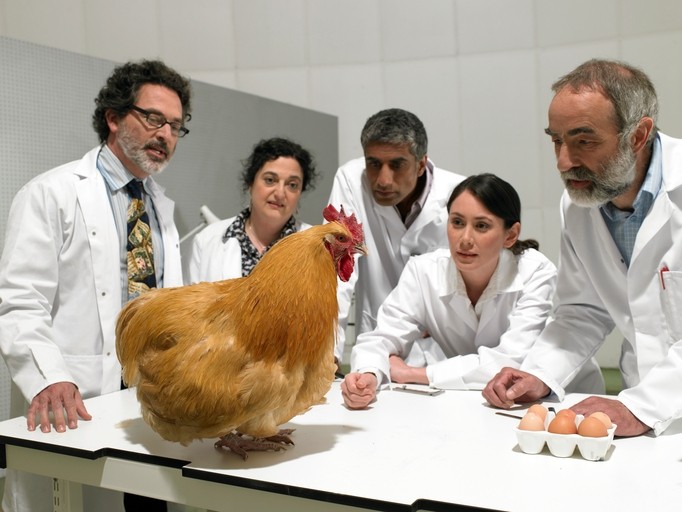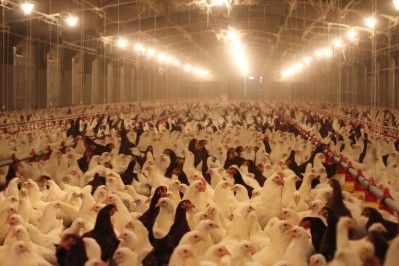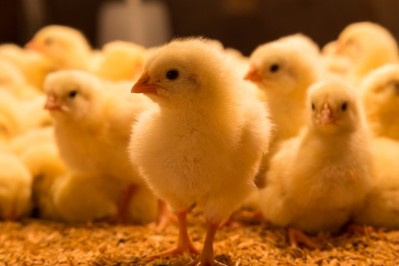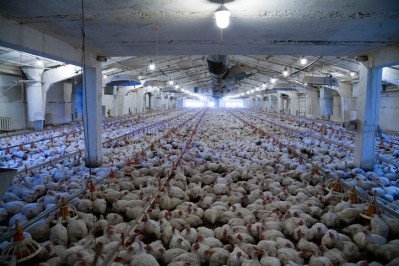Superdosing phytase may boost broiler performance

An international team of researchers from the State University of Western Parana in Brazil, DSM Nutritional Products and the University of Georgia in the US examined the response to superdoses of phytase on the performance of broilers. The group published its work in the journal of Animal Feed Science and Technology.
“The objective of this study was to evaluate the effects of dietary phytase superdosing on broilers from 1 to 42 days of age,” research team members said.
The research team found that several levels of phytase could be used to improve performance during specific time widows.
“Phytase superdosing improves broiler performance based on regression analyses,” the researchers said. “A dose of 2,973 FYT kg-1 is recommended for the best weight gain from 1 to 21 days of age, with 2,051 FYT kg-1 advised for better weight gain and 2,101 FYT kg-1 for the best feed conversion ratio from 21-42 days of age.”
Why superdose phytase?
Poultry production is considered to be one of the most advanced agribusiness production systems in operation, the researchers said. Modern birds provide high production rates for meat and eggs, have high growth rates and use nutrients efficiently.
However, to maximize performance for broilers nutritional requirements need to be frequently re-evaluated, they said.
Minerals, including phosphorus, play an essential role in supporting the metabolism and development of birds, they said. Phosphorus also plays a large physiological role for birds and lack of the mineral in the diet has been linked to bone problems.
However, it also is considered a pollutant of soil and water when found at high levels in the environment, they said.
“Several factors can affect the use of phosphorus by animals, including calcium and phosphorus levels in the diet, vitamin D and its active forms, its relationship with other minerals such as sodium, chlorine and potassium, the type of diet used, and the amount of phytic acid present in the diet,” the researchers said.
Phytic acid or phytate can be found in seeds and plant tissues, it also reduces the digestibility of amino acids and binds to dietary starches reducing the action of amylase and the digestibility of carbohydrates, they said. “During the digestion of lipids, the calcium-phytate complex can react with fatty acids to form insoluble soaps in the intestinal lumen,” they added.
Diets for broilers include plant-based ingredients, seeds and seed products with about 60 to 80% of the phosphorous level coming in the form of phytate, they said. However, the phosphorus is not available to the birds and exogenous sources of phosphorus are included to prevent birds from being minerally deficient.
Enzymes also may be added to feed to improve nutritional content and reduce negative environmental effects from bird or animal waste, they said. Phytases are used to improve phytate degradation, which has been linked with a bump in P retention and “tibia ash concentration, weight gain, feed intake, feed efficiency, nitrogen retention, apparent metabolizable energy and Ca retention.”
“However, like all enzymes, phytases exhibit Michaelis-Menten kinetics with diminishing marginal returns; responses are best described or modeled by methods capable of fitting smooth transitions from ascending to plateau portions,” they added.
Methods and materials
In the feeding trial, 920 male broiler chicks were given one of five diets for a period of 42 days, the researchers said. Main dietary components included corn, soybean meal and wheat bran.
The diets included a control (PC) which provided standard nutritional levels, a negative control (NC) with 0.12% calcium and 0.14% phosphorus, and the NC diet with 1,000, 2,000 or 3,000 FYT kg-1 of a commercially available phytase, they said. “One phytase unit is defined as the amount of enzyme that releases 1 µmol of inorganic phosphate under standard conditions (0.25 M acetate buffer pH 5.5, 37 °C and 5 mmol sodium phytate,” they added.
Bird feed intake and body weights were noted on days 21 and 42, they said. Mortality was noted daily, the feed conversion ratio was determined and performance graphs were calculated to compare the phytase response curve.
Sample birds were collected on days 21 and 42 to evaluate bone development and levels of calcium and phosphorus, they said. Blood samples also were collected for analysis on those days and some birds were harvested to evaluate carcass yield and ileal digestibility of nutrients.
Results
Through day 21 of the feeding trial, weight gain (WG), the feed conversion ratio (FCR) and feed intake (FI) all improved as more phytase was added to the diets, the researchers said. Birds receiving supplemental phytase outperformed those on the positive control with the highest results for those getting the 3,000 FYT kg-1 amount, while those on the NC diet had the lowest WG and limited FI.
Throughout the trial, the increase of phytase provided a quadratic improvement, they said. “The best results for WG, FI and FCRC [feed conversion ratio corrected] were obtained using 2,051, 1,992 and 2,101 FTY kg-1, respectively,” they added.
“Phytase superdosing improves broiler performance based on regression analysis, with 2,973 FYT kg-1 recommended for the best weight gain from 1 to 21 days of age, because the requirement of calcium and phosphorus may be higher because of the osseous growth,” the researchers said. “Considering the total period of 42 days the use of and 2,051 FYT kg-1 and 2,101 FYT kg-1 respectively advised for better weight gain and feed conversion ratio.”
Birds receiving the NC diet had worse results in all categories compared to those on the positive control diet, they said. However, few differences were found for growth plate, hypertrophic cartilage zone, total tibial epiphysis or carcass yields on day 42.
On day 42, birds displayed a difference for Seedor Index (SI) and dry matter in their bones depending on diet, they said. Broilers with the highest SI had 1,553 kg-1 added to their diets.
At the end of the study, the level of P in the blood demonstrated quadratic behavior, although a higher concentration of P was found when 2,033 FYT kg-1 phytase was included in the diet and CA levels were different from the controls at all level of supplementation, they said.
“The apparent ileal digestibility coefficients of dry matter (AIDCDM), mineral matter (AIDCMM) and crude energy (AIDCCE) increased and then decreased with increasing phytase, with maxima recorded after the inclusion of 1164, 1592 and 1085 FYT kg-1 phytase, respectively,” they added.
Source: Animal Feed Science and Technology
Title: Effect of DIETary phytase superdosing on broiler performance
Authors: J Broch, R Nunes, C Eyng, G Pesti, C de Souza, G Sangalli, V Fascina, L Teixeira
DOI: doi.org/10.1016/j.anifeedsci.2018.06.001


















